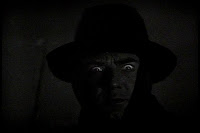 I consider The Wicker Man to be the best horror film of all time. For a film completely devoid of archetypal madmen, killings, screaming and the grotesque this is quite an achievement. The original theatrical version joins us with Sergeant Howie as he travels to the secluded Summerisle. The journey is a protracted one which emphasises the distance we are travelling from the mainland and its safe haven. Our lone policeman arrives on the island and immediately we feel that the locals, although not hostile, are at least suspicious of this outsiders presence.
I consider The Wicker Man to be the best horror film of all time. For a film completely devoid of archetypal madmen, killings, screaming and the grotesque this is quite an achievement. The original theatrical version joins us with Sergeant Howie as he travels to the secluded Summerisle. The journey is a protracted one which emphasises the distance we are travelling from the mainland and its safe haven. Our lone policeman arrives on the island and immediately we feel that the locals, although not hostile, are at least suspicious of this outsiders presence.From this point we follow Howie, played exceptionally by Edward Woodward, as he investigates the mysterious disappearance of a young local girl Rowan Morrison. Early in the film I found it difficult to state my allegiance with either the locals or the protagonist as Howie’s religious fervour can make you feel that his prudish behaviour and beliefs are to blame for his over-zealous interpretation of the regional customs. It does however become clear that forces are conspiring against the policeman who remains at least one step behind those he accuses throughout the body of the film.
Christopher Lee is given a sense of freedom by the character of Lord Summerisle. Set free from the constraints of the Hammer films which made him famous. As discussed during my previous blog, the character of Dracula has a tendency to capture the careers of those who become famous for their depiction. Lee has acknowledged The Wicker Man as being one of his favourite career moments and it is clear he revels in the character. Summerisle seems no more than slightly eccentric a gentleman who looks to uphold the cultures and practices of old which are still practiced on his land that time (almost) forgot. That is until the celebratory processions which sees the town indulge in the rituals of a bygone era. It is no longer a lingering doubt of madness we feel apparent.

Come. It is time to keep your appointment with the Wicker Man.
The ending is as horrifying as any ever put to film. The moral high ground has been absolute in its failure to protect Sergeant Howie as he is imprisoned and sacrificed as an offering to the Sun God in the hope of a successful crop the coming summer. The film concludes with a zoom into the setting sun as The Wicker Man and its contents burn.
The influence of The Wicker Man is hard to trace specifically. Problems with distribution hindered the original release and reception was lukewarm at best. Paul Giovanni’s soundtrack has been influential in the folk music genre but the film is so specific in time and depiction that it is difficult to reference for those in direct appreciation.
I have never seen the remake of this classic British horror. For me, the ‘British’ element is absolutely key to the success of The Wicker Man, as is the period. Director Robin Hardy is due to release what he has termed a “spiritual sequel” titled The Wicker Tree which is due for release in 2011.
In his notes for film, Ryan Gilbey states that “You never feel quite the same again after seeing The Wicker Man”. I concur.


















